Two full-sussers, optimised for maximum performance off the beaten track: the Specialized S-Works Epic World Cup vs the Specialized Diverge STR Pro. A high performance XC mountain bike or a fully suspended gravel racer? Which is faster, which is more versatile, and what makes the difference? We tested both bikes head-to-head in Tuscany!
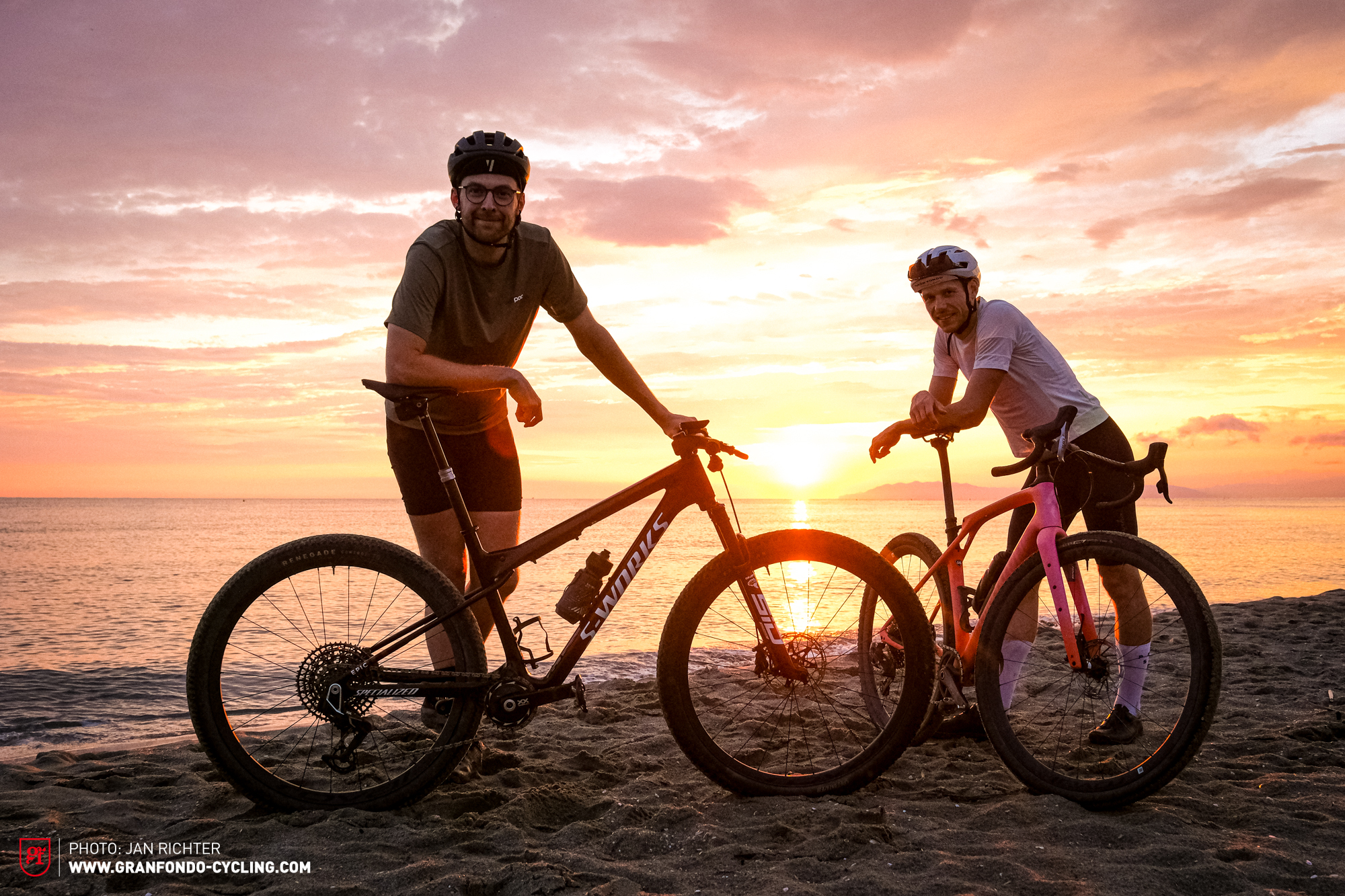
The boundaries between MTBs and gravel bikes are becoming increasingly blurred. And the semi-ironic comment to “buy a mountain bike; it’s the gravel bike of tomorrow” has become increasingly common – mostly from the drop bar faction. They’re not entirely wrong: more and more gravel bikes rely on MTB technologies. Dropper posts, mullet drivetrains, 29″ tires, and suspension are no longer uncommon features. Bike brands are also developing proprietary gravel technologies, like the rear suspension system of the Specialized Diverge STR, to make their gravel bikes even more capable or comfortable. On the flip side, some XC bikes are turning to increasingly radical measures in the pursuit of efficiency. Is it a full-susser or a hardtail? We asked ourselves this question when Trek launched the Supercaliber in 2019, and again with the introduction of the new Specialized S-Works Epic World Cup. Both bikes rely on flexible carbon seat stays and a beautifully integrated shock in the top tube. Two different yet similar looking systems with the same goal: maximum efficiency! On the hunt for marginal gains and podium finishes, XC race bikes are becoming lighter, stiffer and ever closer to modern off-road oriented gravel bikes – at least on the spec sheet.

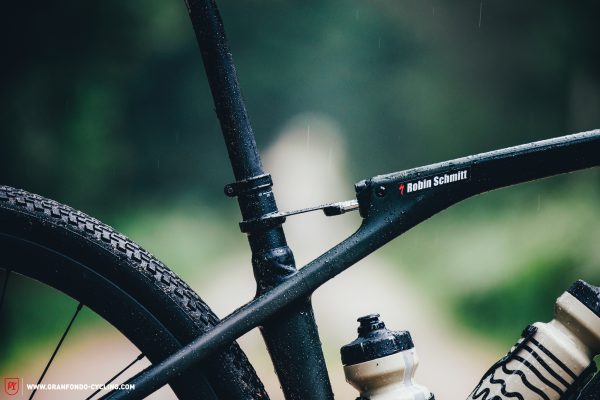
For all those who can’t decide between MTB or gravel bike, we’ve already put the two concepts head-to-head in a detailed group test. And if you want to delve into the various suspension systems of drop bar bikes, our in-depth suspension bible is precisely what you’re looking for.
What do the roadies of GRAN FONDO magazine know about mountain bikes, you ask? Well, our editorial team are no strangers to off-road tech, reviewing all kinds of bikes for our sister publication ENDURO magazine. Big jumps, long travel, volume spacers, and shim-stack tuning are just as much a part of our daily lives as leg shaving and espresso. You’ll be hard-pressed to find other roadies out there who are as well-versed with mountain bikes as we are ;). However, this is not intended to be a generic comparison of MTB and gravel concepts. Instead, it’s a shoot-out between two specific bikes: the Specialized S-Works Epic World Cup vs Specialized Diverge STR Pro!
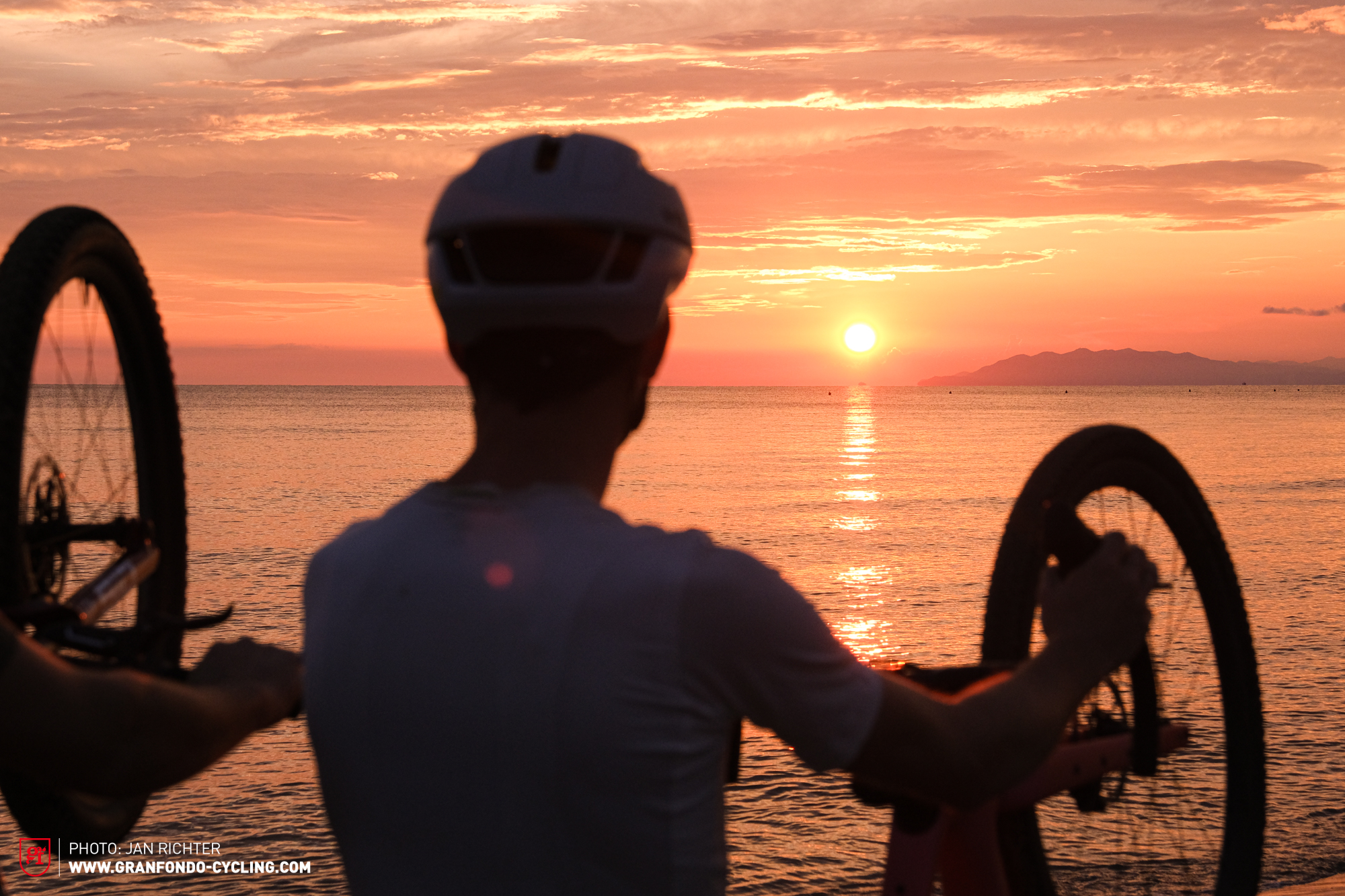
Sibling rivalry? The Specialized S-Works Epic World Cup and Specialized Diverge STR Pro in direct comparison
“Innovate or die” has been Specialized’s motto for decades. The Epic World Cup and the Diverge STR are two perfect examples of this, representing two extremely exciting, high-tech bikes in the Californian brand’s range. Although they look completely different, they compete in similar terrain off the racetrack! After all, both bikes have the same goal, just from different perspectives. From a roadie’s point of view, the Diverge STR looks like a monster truck with front and rear suspension, a mountain bike cassette, and big knobby tires. For mountain bikers, the ultra-lightweight Specialized S-Works Epic World Cup with its efficient rear end and aggressive geometry is like a Formula 1 race car among MTBs. It’s clear that these two bikes have a lot in common when it comes to their intended use. Their spec sheets also show how similar these bikes actually are, despite looking so different.
In direct comparison: weight, travel, and tire width

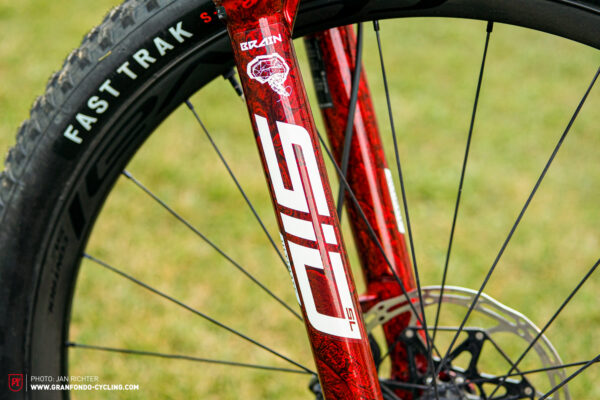
S-Works Epic World Cup: 110 mm

Diverge STR Pro: 20 mm
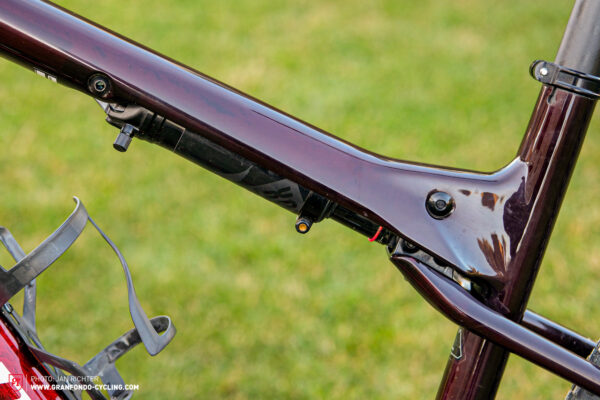
S-Works Epic World Cup: 75 mm
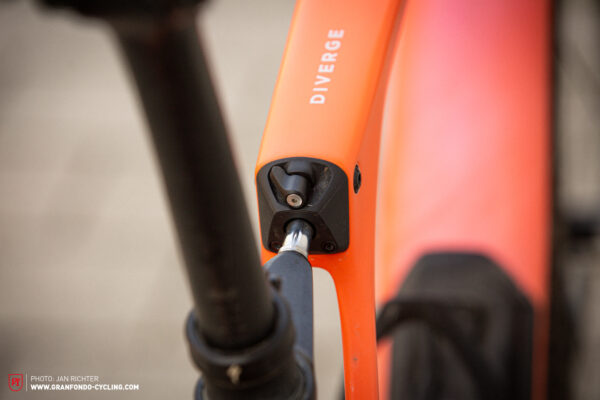
Diverge STR Pro: 30 mm
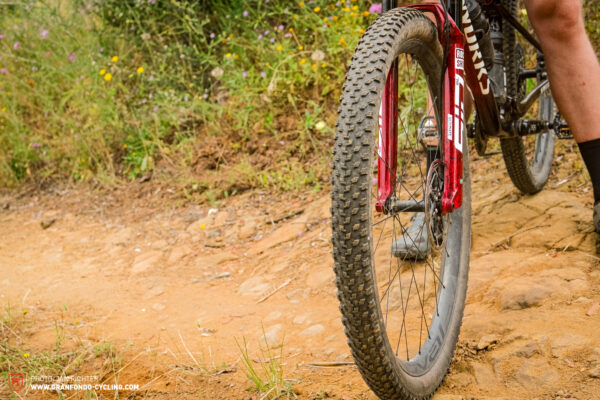
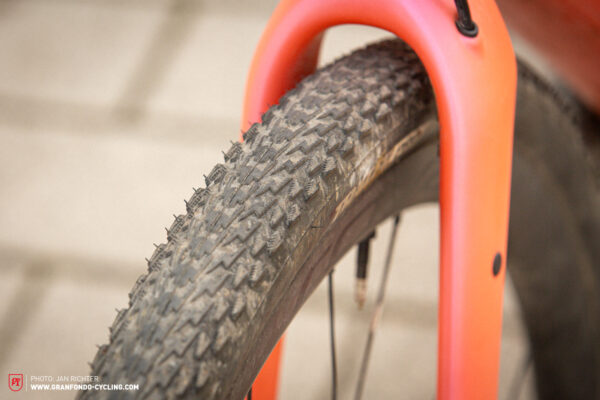
The differences in their specs and features are still there, but the gap has grown much smaller. But should you even pay attention to this at all? Ultimately, it’s the overall concept and how the bike rides that counts. But how do the technical specs affect the bikes’ performances? What’s faster, what’s hotter? Is one of them more versatile? And what sets them apart? Tire width, travel, or something entirely different?
The Specialized S-Works Epic World Cup – Made for the podium
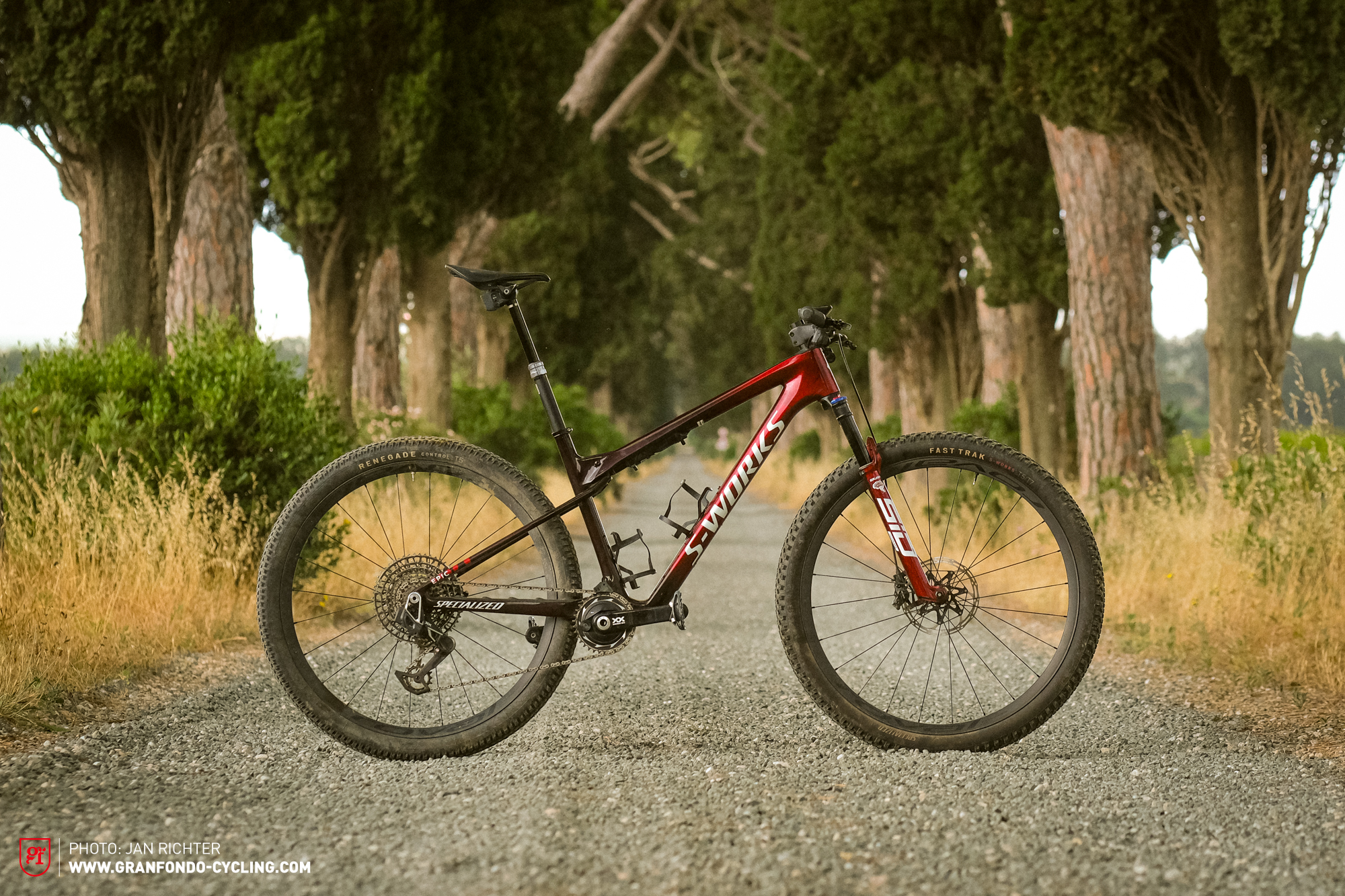
As efficient as a hardtail, yet as smooth and controlled as a full-susser. Specialized are breaking new ground in many respects with the S-Works Epic World Cup, turning to their know-how from the drop-bar sector with the aim of making the Epic World Cup a world cup winning bike. It’s uncompromisingly trimmed for speed. To save weight, Specialized rely on a carbon lay-up based on their ultra-lightweight Aethos road bike. The suspension was specially developed for the Epic World Cup in collaboration with RockShox, boasting sophisticated technology that claims to save precious seconds on the clock. There is no need for a lockout lever, since the fork knows exactly when to give way without any additional input from the rider. The Brain technology of the RockShox SID SL Ultimate Brain fork works via an inertia valve. If the force comes from above, due to the weight of the rider on the handlebar, for example, the valve remains closed. In the event of an impact from below, it opens and makes 110 mm of travel available. The force required to open the valve can be adjusted via the Brain Fade knob. In the firm setting, the specially developed RockShox-Specialized SIDLuxe WCID Ultimate shock requires a lot of input to get it to budge. This offers a stable and efficient pedalling platform and only frees up travel when required. Sounds interesting? Our colleague Simon put the bike through the wringer for our sister magazine, ENDURO, here.

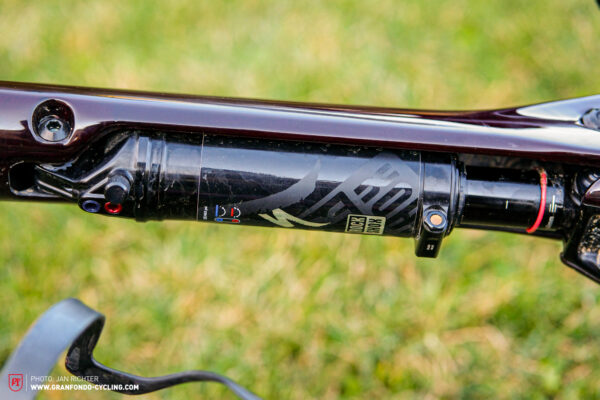

The rest of the components of the Epic World Cup will even turn the heads of die-hard roadies, largely consisting of the Control SL range from Specialized’s in-house Roval brand. The Roval Control SL wheelset weighs in at just 1,240 grams, taking weight savings to the extreme. The one-piece Roval Control SL cockpit puts you in an aggressive position with its negative 12° stem and 8° backsweep.
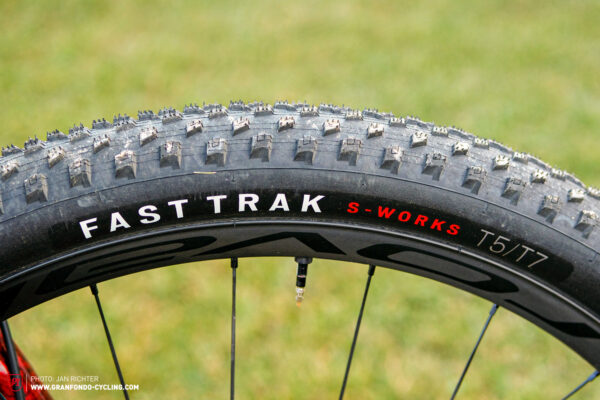
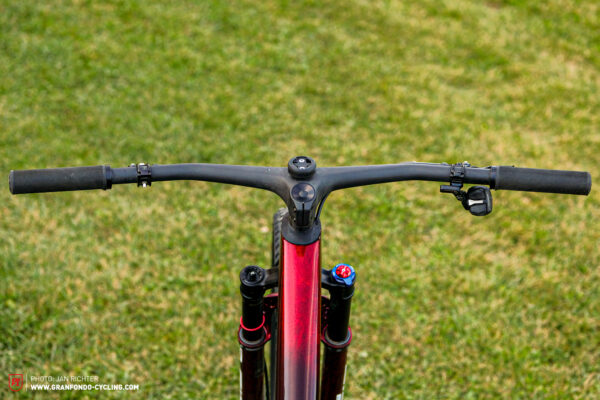
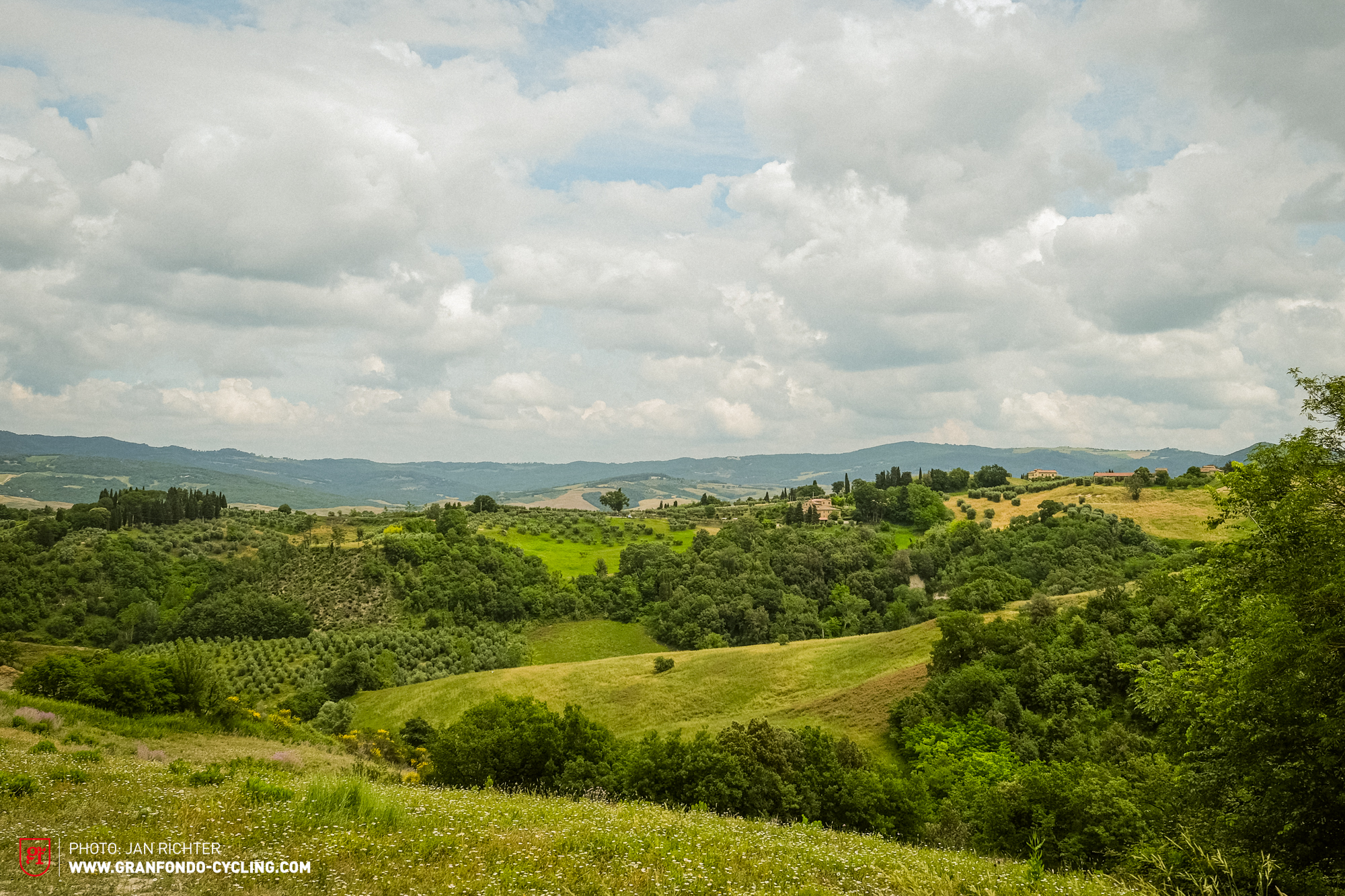
Specialized also save a lot of weight on the seat post, since the Epic World Cup comes specced with a rigid carbon post. To make better use of the advantages offered by a mountain bike, we swapped the Roval Control SL seat post for a RockShox Reverb AXS dropper post. This makes the Epic World Cup almost 500 grams heavier, but the freedom of movement gained is worth it to us.
The remainder of the components are also optimised for minimum weight and maximum racing efficiency. You won’t find a SWAT storage compartment in the down tube or a hidden tool mount on the Epic World Cup. The many small and large weight savings add up to a remarkably light full suspension XC bike, with the standard build without the dropper post weighing (roughly) just 200 grams more than the Diverge STR Pro! Sure, the S-Works variant of the Diverge STR is lighter still, but the small gap is amazing, nonetheless, considering the significantly longer suspension travel and wider tires on the Specialized S-Works Epic World Cup.
| Size | XS | S | M | L | XL |
|---|---|---|---|---|---|
| Top Tube | 541 mm | 581 mm | 612 mm | 641 mm | 670 mm |
| Seat Tube | 392 mm | 395 mm | 410 mm | 450 mm | 500 mm |
| Head Tube | 93 mm | 93 mm | 95 mm | 110 mm | 125 mm |
| Head Angle | 66.5° | 66.5° | 66.5° | 66.5° | 66.5° |
| Seat Angle | 74.5° | 74.5° | 74.5° | 74.5° | 74.5° |
| BB Drop | 61 mm | 58 mm | 57 mm | 57 mm | 57 mm |
| Chainstay | 430 mm | 430 mm | 430 mm | 430 mm | 430 mm |
| Wheelbase | 1089 mm | 1124 mm | 1150 mm | 1181 mm | 1212 mm |
| Reach | 380 mm | 415 mm | 440 mm | 465 mm | 490 mm |
| Stack | 603 mm | 600 mm | 600 mm | 614 mm | 628 mm |
As expected, the geometry of the Epic World Cup is aggressive. With a head angle of 66.5°, which is rather slack for an XC race bike, it also offers a lot of composure on the descents, instilling you with confidence. The special paint job undoubtedly also provides a boost to your ego. The colour-matched RockShox SID fork, the smooth fade, and the red shimmering effect are real eye-catchers.
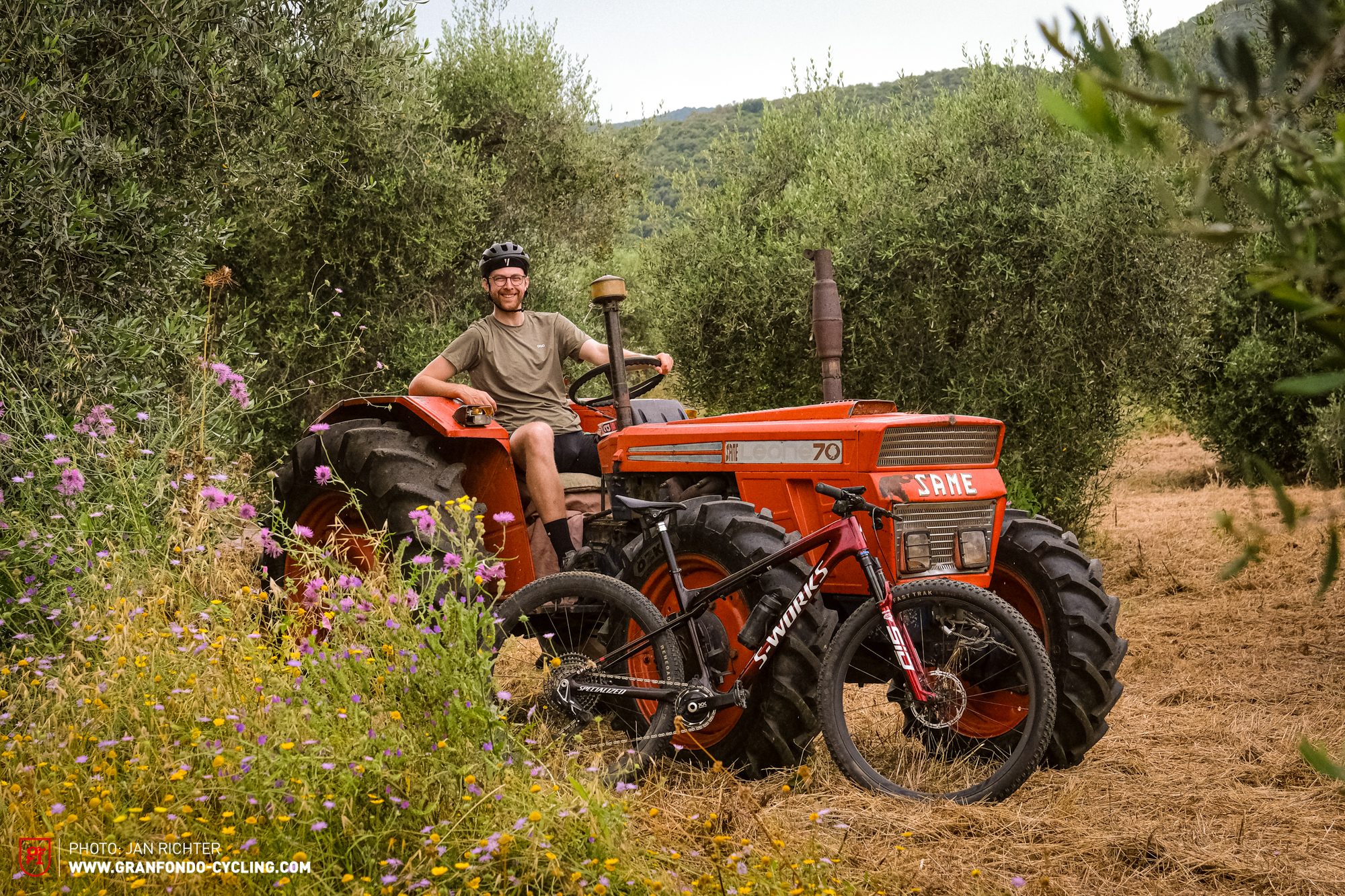

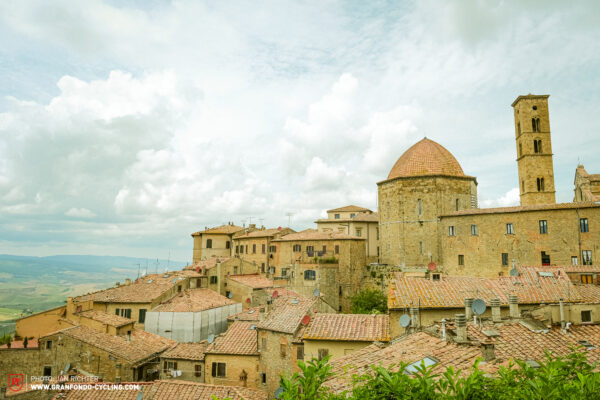
Is this still gravel? The Specialized Diverge STR Pro
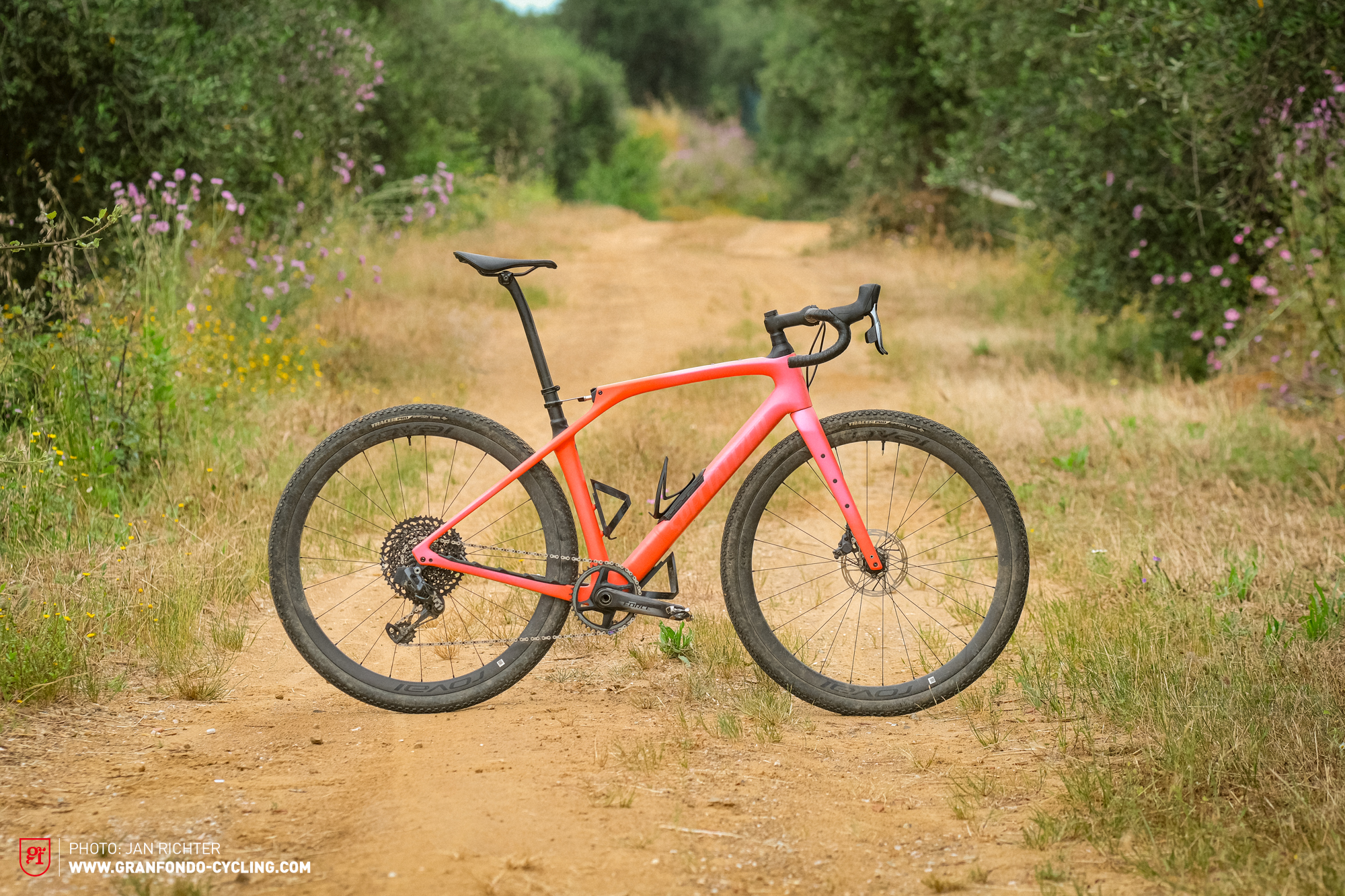
The Specialized Diverge STR caused quite a stir in the drop bar world during its official launch at the end of 2022. A full-suspension gravel bike? You might as well buy a mountain bike then, right?
Specialized remain true to their philosophy of innovation with the Diverge STR, rethinking the topic of suspension on a gravel bike from the ground up: instead of relying on mountain bike components, they developed a completely new damping system specifically for the requirements of gravel riding. The replaceable seat tube acts as the spring, with different stiffness options available to tune the ride. The shock inside the top tube operates on the pull stroke, offering controlled rebound and compression damping, thereby preventing uncontrolled bouncing. Up front, you’ve got the Future Shock 2.0, which sits in the head tube under the stem. It consists of a small coil inside a damping cartridge, allowing you to adjust the rebound by a total of 9 clicks via a dial on top of the stem. As such, you’ve got on the fly adjustability, offering everything from a plush, open setting to a firm platform that doesn’t bob, (though you can’t lock it out completely).
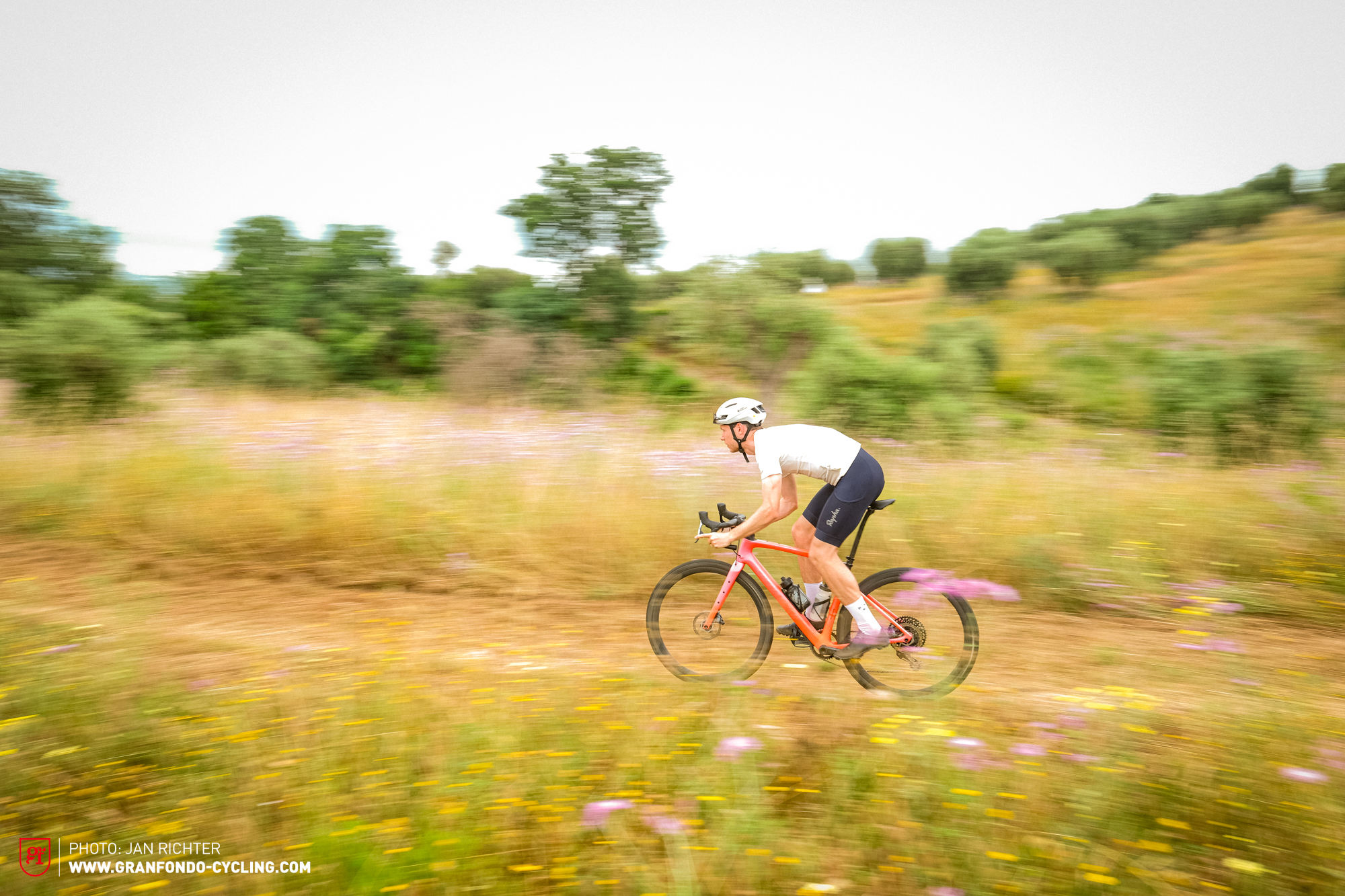

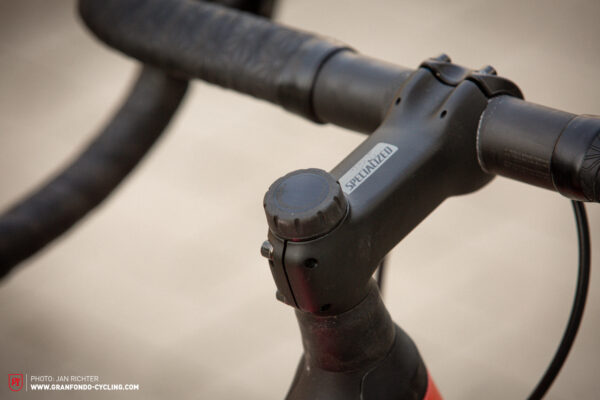
The rest of the components suit the concept of a high-performance all-rounder. The 42 mm wide S-Works Tracer tires offer grip and compliance with low rolling resistance, capable of excelling on almost all surfaces. They proved as much in our big gravel tire group test. The SWAT compartment in the down tube, triple bosses in the front triangle, and eyelets on the fork offer lots of on-bike storage options, so you can be prepared for all eventualities on epic rides. The mullet drivetrain, with its large 10–50 t MTB cassette and 40 t chainring, offers plenty of reserves for steep climbs. Evidently, the components of the Diverge STR Pro have been carefully specced, catering to many different use cases. The Satin Blaze/Violet Ghost Pearl Fade paint job looks as extraordinary as it sounds: the flip-flop effect gives the colour a different shade depending on the light and the angle from which you look at it, making the Diverge STR Pro one of the most extravagant bikes on the gravel.
| Size | 49 | 52 | 54 | 56 | 58 | 61 |
|---|---|---|---|---|---|---|
| Top tube | 527 mm | 540 mm | 556 mm | 570 mm | 586 mm | 597 mm |
| Seat tube | 390 mm | 430 mm | 470 mm | 500 mm | 530 mm | 560 mm |
| Head tube | 100 mm | 100 mm | 115 mm | 130 mm | 155 mm | 182 mm |
| Head angle | 70° | 70.5° | 71.25° | 71.75° | 71.75° | 71.75° |
| Seat angle | 74.5° | 74.25° | 74° | 74° | 74° | 74° |
| Chainstay | 429 mm | 429 mm | 429 mm | 429 mm | 429 mm | 429 mm |
| BB Drop | 80 mm | 85 mm | 85 mm | 85 mm | 85 mm | 85 mm |
| Wheelbase | 1,023 mm | 1,027 mm | 1,034 mm | 1,044 mm | 1,060 mm | 1,078 mm |
| Reach | 365 mm | 374 mm | 383 mm | 392 mm | 401 mm | 410 mm |
| Stack | 569 mm | 576 mm | 593 mm | 609 mm | 633 mm | 659 mm |
The progressive geometry has a relatively long reach and wheelbase for a gravel bike, intended to boost your confidence on the descents and offer a comfortable long-distance riding position, while remaining efficient and aerodynamic. The somewhat steep seat tube angle compensates for the sag of the rear future shock suspension. On paper, this results in a modern all-rounder with massive reserves for all kinds of adventures. Time to race the bike on our test track! For those who want a more in-depth look at the Diverge STR, check out Robin’s detailed review in GRAN FONDO.
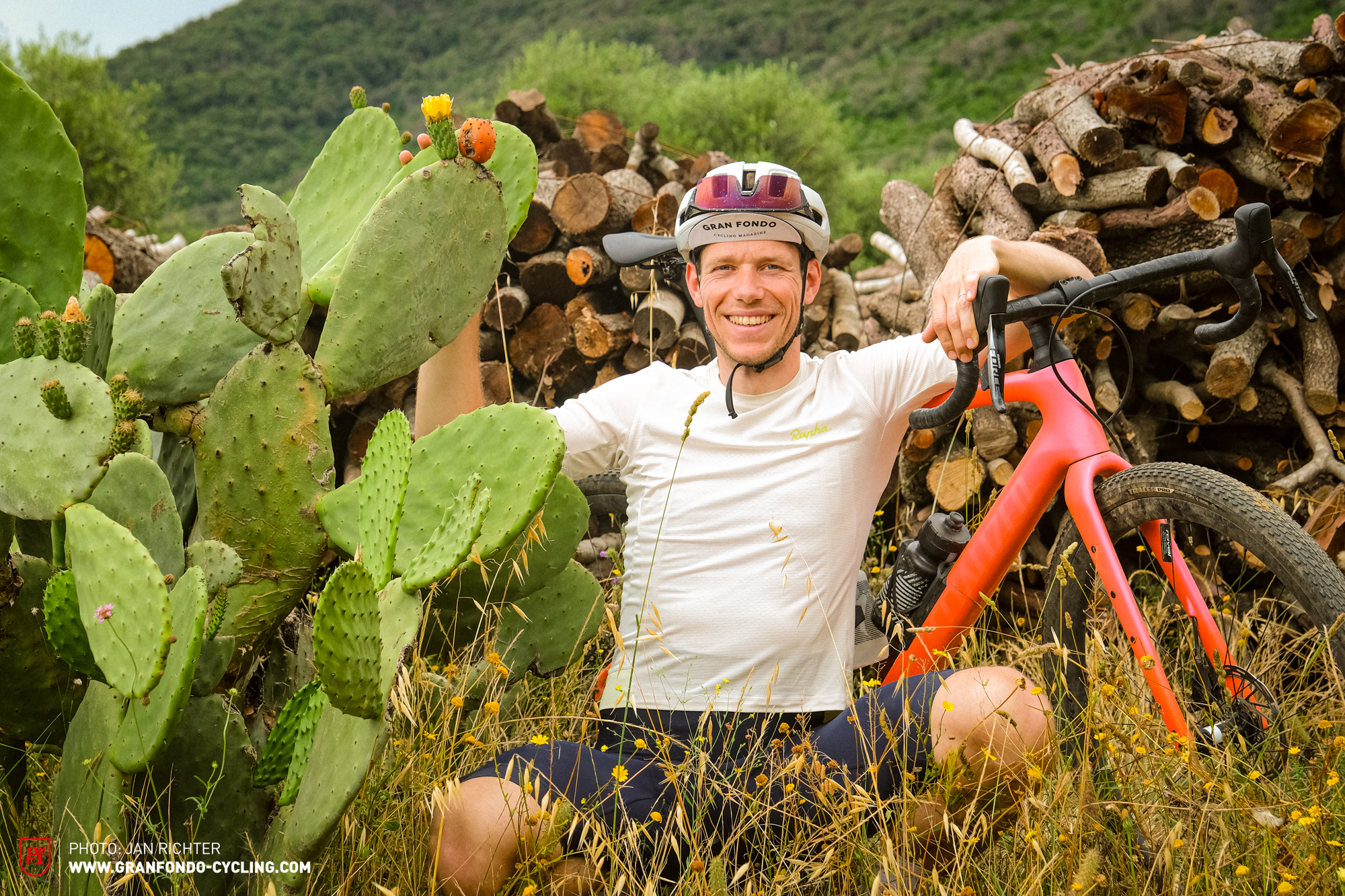
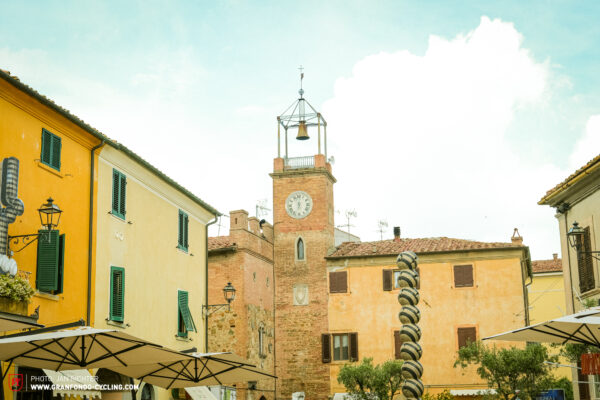

Gravel shootout! Specialized Diverge STR Pro vs Specialized Epic World Cup
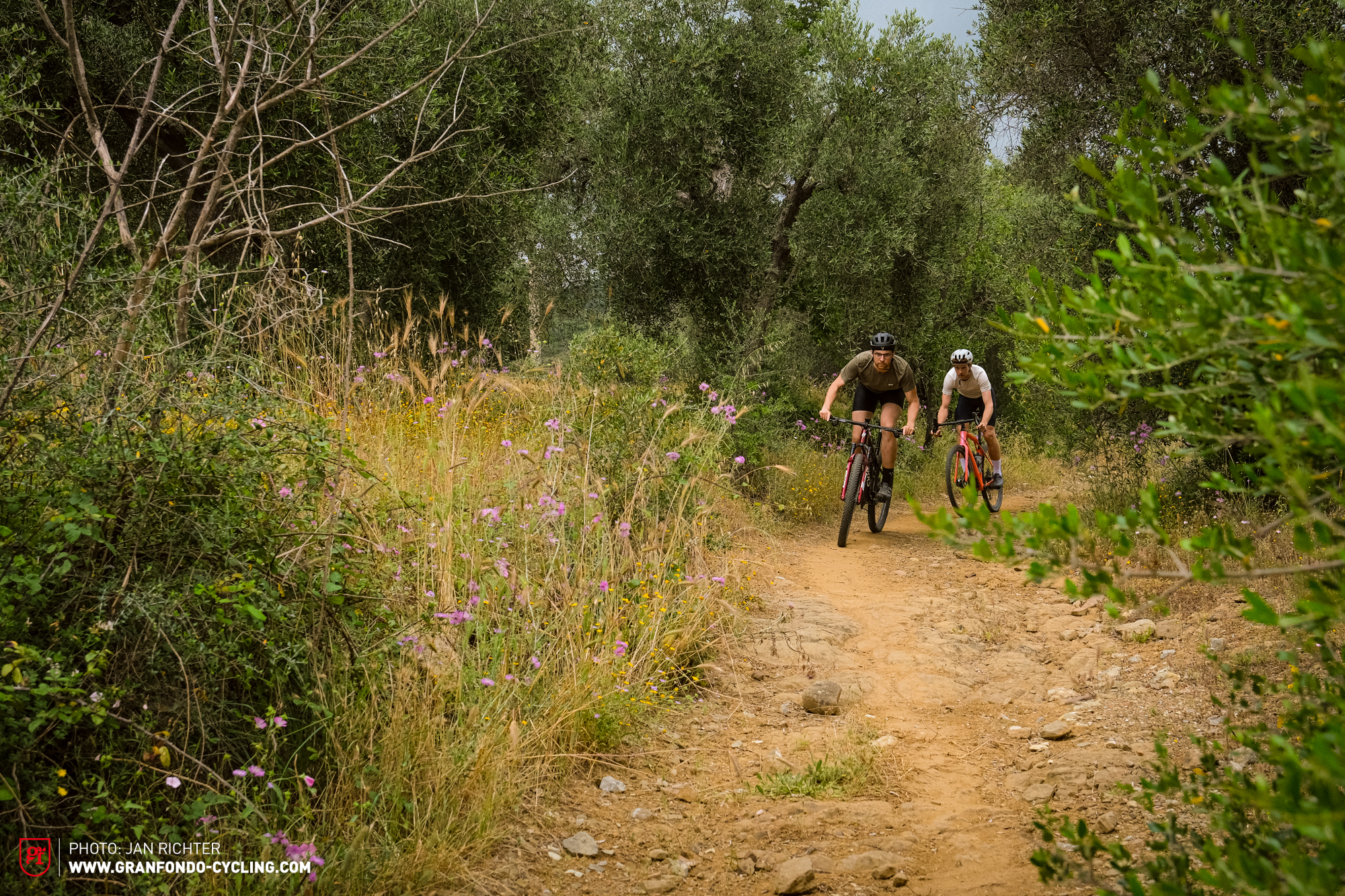
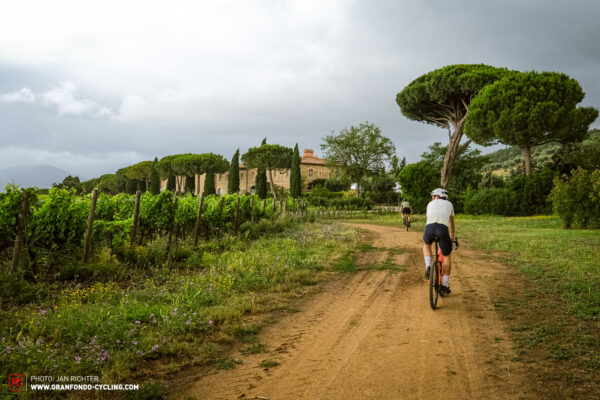

Right. Let’s get down to business. What are these bikes capable of? Do the differences run deeper than just the shape of the bars? We took the Specialized S-Works Epic World Cup and Specialized Diverge STR Pro to bella Italia to find out just that, indulging in Dolce Vita, lactic acid, and some serious wattage battles. Tuscany offered us the ideal conditions with its long gravel roads, winding trails, countless steep climbs, and excellent coffee.
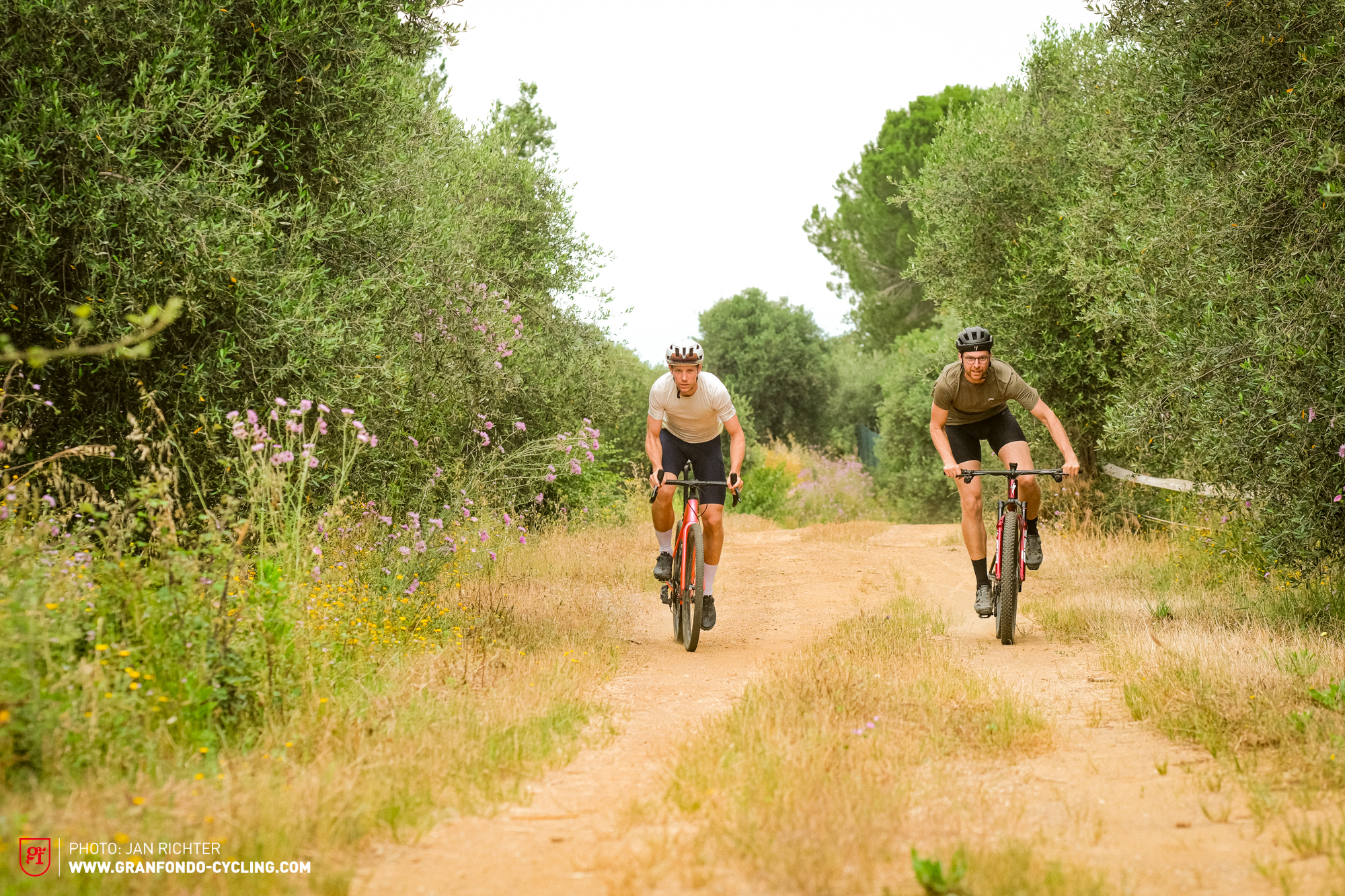
On your marks, get set, Go! When pulling away, the Epic World Cup shows what it’s built for. The ultra-lightweight Roval Control SL wheels and ample grip of the 2.35″ Specialized Renegade rear tire allow it to take the lead. 1:0 for the Epic!
The lively acceleration of the Epic also makes it the bike of choice for Tuscany’s countless steep climbs, with gradients of more than 20% and loose surfaces. Since the suspension of the Epic World Cup decouples the rear wheel from the rest of the bike, it sticks to the ground even over big bumps, generating traction whether you’re standing or sitting, which isn’t the case with the Diverge STR. Add to this the 34 t chainring and 10–52 t cassette on the Epic World Cup, and it’s unbeatable on the climbs, leaving the Diverge STR Pro behind. The rear wheel of the gravel bike struggles for traction, especially on loose or rough terrain. This is where you’ll notice that the Future Shock suspension decouples the rider and not the bike, with the rear triangle remaining completely rigid. The rear tire is more likely to bounce off the ground when rolling over big obstacles. As such, the rear tire will spin out unless you time your pedal strokes carefully. 2:0 for the Epic.
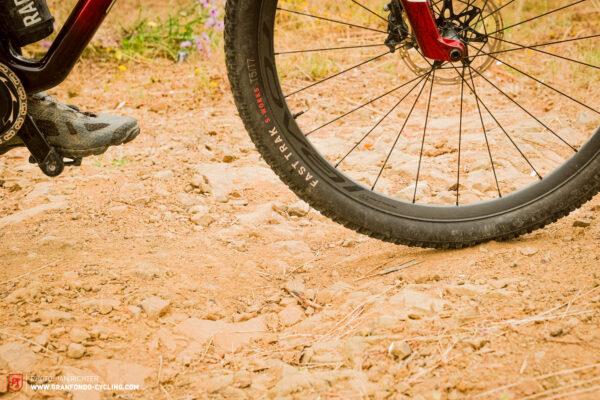

Once the two bikes have been brought up to speed, the tide turns. On straight sections, both the Diverge STR Pro and the Epic World Cup break the 30 km/h mark with ease. In the long run, however, the Diverge STR Pro proves to be more efficient, making it significantly easier to maintain that pace, which is largely due to the more aerodynamic riding position. 2:1, the Diverge STR is catching up!
The 6 additional teeth on the chainring of the Diverge STR Pro offer more reserves at the upper end, allowing you to keep pedalling at a comfortable cadence for longer on fast, smooth descents. While the Epic World Cup puts the rider in an aggressive riding position, and you can get into a more aerodynamic stance by grabbing the handlebar closer to the stem, the drops of the Diverge STR offer significantly more comfort and control, letting you keep a finger on the brakes. That way you stay tucked for longer, and save energy. 2:2 – even!
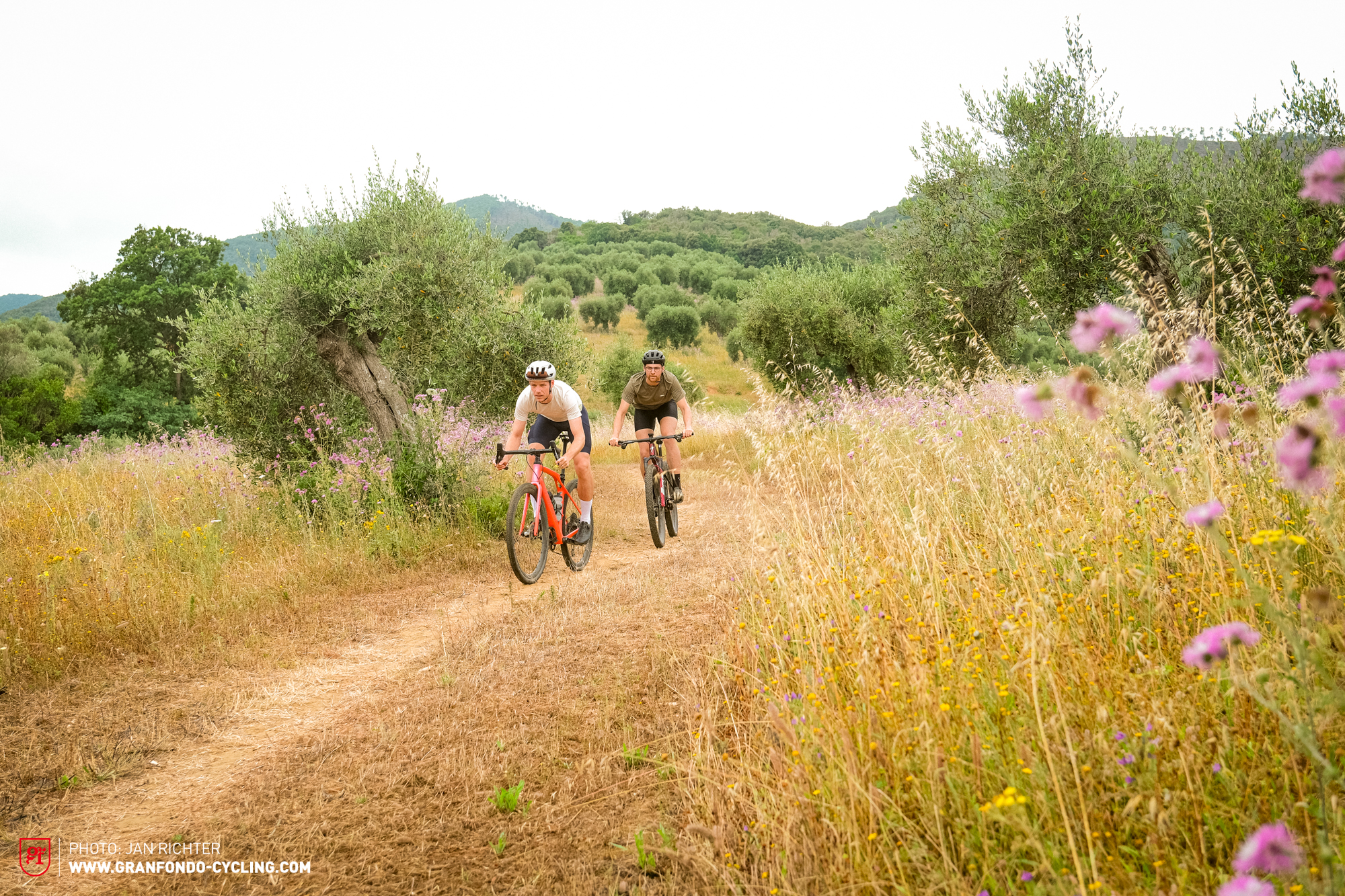
You can adapt your riding position on the Diverge STR Pro to suit the situation. From stretched and aero in the drops to comfortable and upright on the tops, it allows a mixture of different riding positions, which significantly increases long-distance comfort. The Epic World Cup forces the rider into an aggressive position, and to hold it for a long time requires a certain level of core strength. Both bikes do a remarkable job of absorbing bumps and vibrations. The Future Shock system on the Diverge STR Pro and the RockShox air suspension on the Epic World Cup performs convincingly throughout.
The Diverge STR Pro is surprisingly capable on the descents, but the wider tires, wide, flat handlebar, slacker head angle, and 110 mm travel fork on the Epic World Cup let you maintain control at significantly higher speeds.
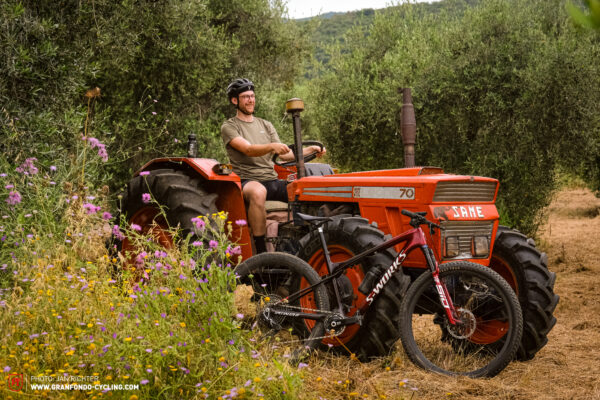
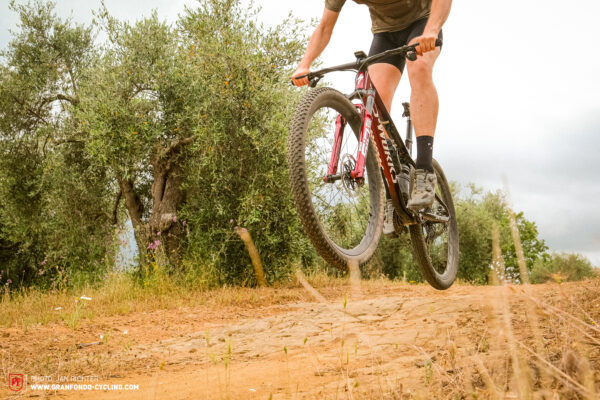
In terms of handling, both bikes are highly predictable and composed, coupled with precise and direct steering. Regardless of whether you’re on a tight and winding trail or a fast and open straight, the Epic World Cup and the Diverge STR Pro both are a blast to ride, making you feel confident and in control. It’s a tie!
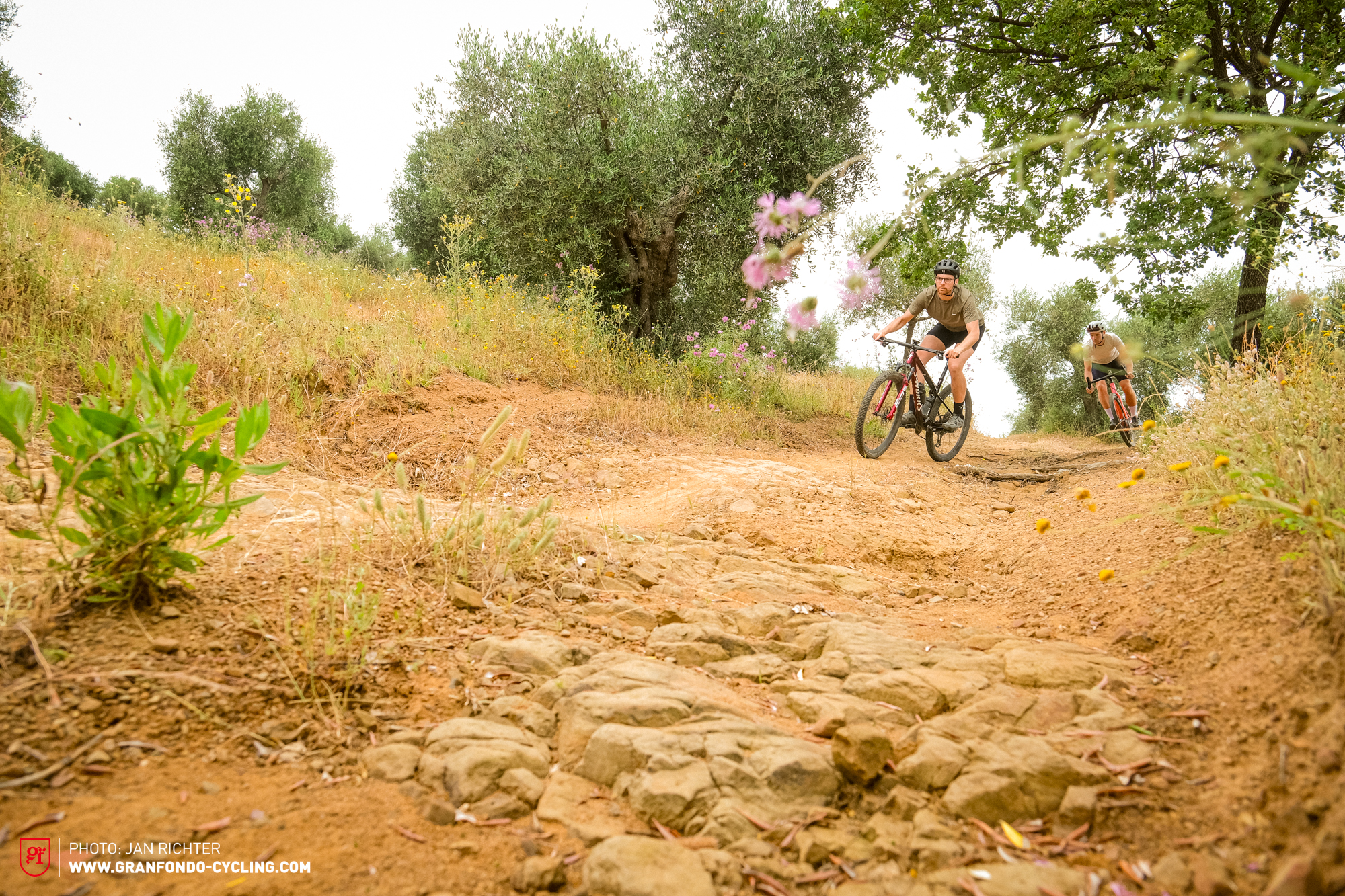
MTB or gravel bike? Which suits you best?
Unfortunately, there’s no general answer to this question. Ultimately, you should never choose a bike based on the category; you should pick a specific model, regardless of the label! However, in the case of Epic World Cup vs Diverge STR Pro, we can make a clear recommendation!
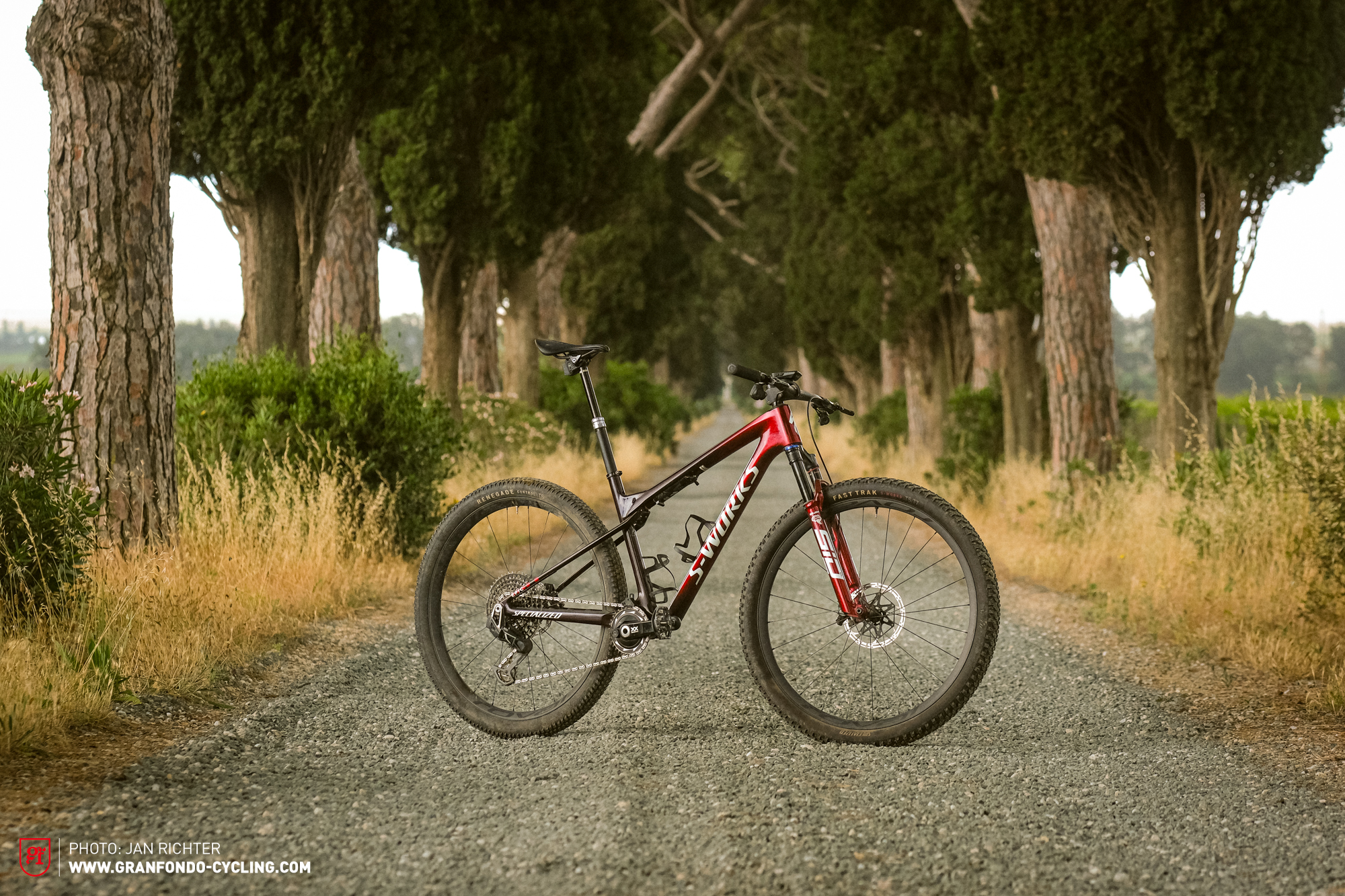
Specialized Epic World Cup 2023
Specifications
Fork RockShox SID SL Ultimate Brain 110 mm
Rear Shock RockShox SID WCID 75 mm
Seatpost Roval Control SL - mm
Brakes SRAM Level Ultimate Stealth 180/160 mm
Drivetrain SRAM Eagle Transmission XX SL 1x12
Stem Roval Control SL 70 mm
Handlebar Roval control SL 780 mm
Wheelset Roval Control SL 29"
Tires Specialized Fast Trak S-Works T5/T7/Specialized Renegade Control T5 2.3"/2.3"
Technical Data
Size XS S M L XL
Weight 9.6 kg
The Epic World Cup is aimed squarely at the racers: uncompromising, aggressive, light, and fast, predestined for fast sprints, steep climbs, and technical descents. If you think a longer travel bike will always be more comfortable, think again. The Epic World Cup is much more aggressive than the Diverge STR Pro, requiring a high level of fitness to be fun on a long ride. The Epic World Cup is a thoroughbred race bike, which is underlined by the lack of dropper post to save weight, which we think definitely belongs on every mountain bike. In short: if you’re looking for a comfortable all-rounder, you better look elsewhere. The Specialized S-Works Epic World Cup is at home on the racetrack!
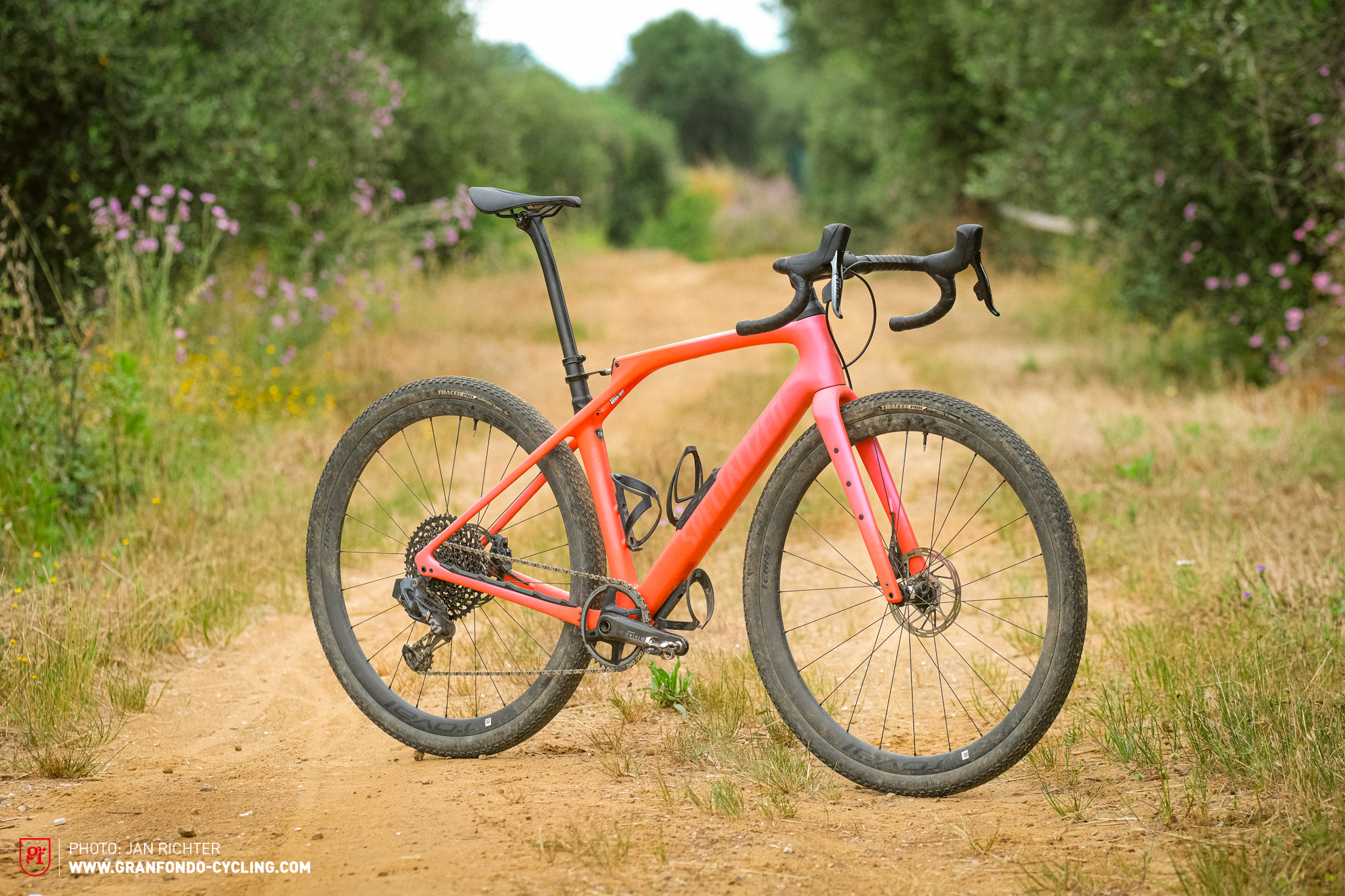
Specialized Diverge STR Pro
€ 9,000
Specifications
Fork rigid fork
Seatpost S-Works Carbon Seat Post
Brakes SRAM Force 160/160 mm
Drivetrain SRAM Force eTap AXS / XO1 1x12
Stem Future Stem, Pro 100 mm
Handlebar Roval Terra, carbon 420 mm
Tires Specialiozed Tracer 28"
Technical Data
Size 49 52 54 56 58 61
Weight 9.42 kg
Specific Features
Future Shock Suspension System both front and rear.
Very high level of compliance
SWAT Box storage compartment in the downtube
Many parts are in-house designed and manufactured
The Specialized Diverge STR Pro looks like an extravagant off-road specialist, but it turns out to be a very versatile bike. Admittedly, it can’t keep up with the Epic on tight racetracks with steep climbs and loose ground, which is home turf for the Epic World Cup, but it makes up for it with versatility. It excels on everything from asphalt to singletrack, where it proves to be comfortable, sporty, capable, and loads of fun. Unfortunately, the shocks on the Diverge STR increase the number of moving parts that require regular servicing and can wear out over time. However, that comes with the terrain, as the Specialized Diverge STR Pro is a high-tech gravel bike.
Conclusion
The boundaries between XC and gravel are becoming increasingly blurred. In addition to the shape of the handlebar, however, there are very clear differences. A drop-bar bike isn’t necessarily sportier than a MTB. You’ll find specialists and well-balanced all-rounders in both categories. On fast straights, however, even high-end XC race bikes can’t keep up with skinny-tired gravel bikes. And gravel bikes like the Diverge STR Pro are becoming increasingly capable off-road, though they’re a far cry from modern mountain bikes, which is good. Easy singletrack is more fun on the Diverge STR Pro, because it’s less forgiving.

Did you enjoy this article? If so, we would be stoked if you decide to support us with a monthly contribution. By becoming a supporter of GRAN FONDO, you will help secure a sustainable future for high-quality cycling journalism. Click here to learn more.
Words: Jan Richter Photos: Jan Richter







